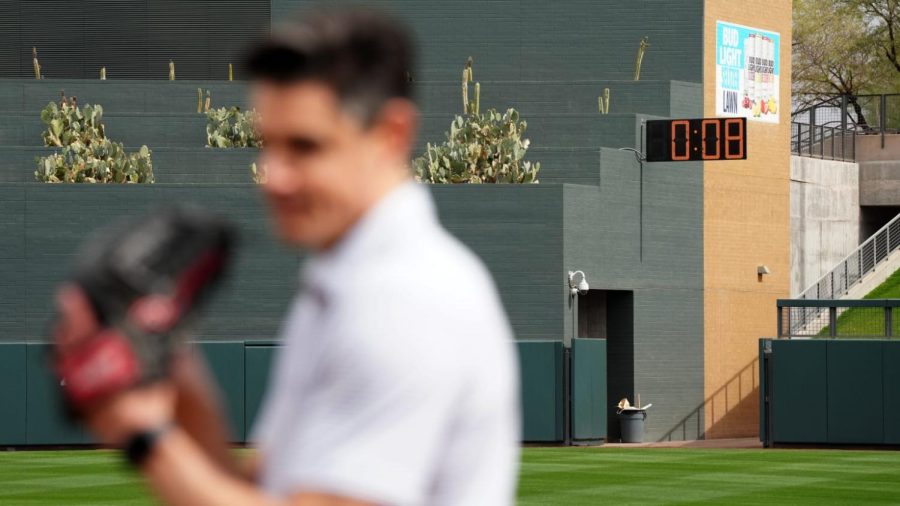As players begin to report for spring training, the MLB has implemented several new rules for the 2023 season after testing them in the minor leagues.
For me, this set of rules is a mixed bag. The most intriguing of the bunch is the elimination of the infield shift, which has been a common topic of conversation in my baseball-loving household for years. Until this year, the infield shift was a defensive technique that allowed teams to place three infielders on one side of second base as opposed to the typical formation of having two on each side. The shift was typically used when a batter was known to pull most of his hits to one side of the infield to maximize the chance of a groundout.
With the new rule, all four infielders must be on the dirt with two on each side of second base when the ball leaves the pitcher’s hand. The goal is to increase the league’s batting average, and I have to say I’m on board with the change. There’s nothing more frustrating than seeing a hitter rip a ball over the second baseman’s head and watching it get caught by an out-of-position shortstop halfway into right field. If anyone can play anywhere, what’s the point of having positions?
Then come the rules I’m indifferent towards: bigger bases and a stricter limit on when position players can come into pitch. The larger bases are an attempt to reduce basepath injuries, which is generally a difficult premise to argue with, and games reach the point of position players taking the mound so infrequently that it doesn’t seem worth the trouble to have strong feelings about it one way or another. My energy is much better spent complaining about other rules. See below.
First, we have the new pitch clock, which requires pitchers to start their motion within 15 seconds of receiving the ball when the bases are empty and within 20 seconds when there are runners on base. My first qualm with this is that it’s just so needlessly complicated. It requires adherence from batters getting into the box on time, catchers getting the ball back to the pitcher and of course, the pitcher getting ready and beginning the pitch. Also, as I’ve said in previous columns, I will never understand the school of thought that shorter games (i.e. less baseball) are better or more engaging for fans that are there to watch baseball.
Then, we have the disengagement limit. A disengagement occurs when the pitcher steps off the rubber for any number of reasons, including attempting a pickoff or just resetting before throwing a pitch. This season, pitchers will only be allowed two disengagements without penalty. Now, you might be thinking, “Maddie, that doesn’t make any sense! Surely that means that after two disengagements, any player on base will be off and running!”
Yes, brilliant reader, you’re right. Surely, this rule means that, knowing a pitcher cannot throw over at them a third time in an at-bat, runners will take bigger leads and be much more likely to successfully steal. You might as well give them a free base. This one gets a thumbs-down from me.
Finally, we have the cream of the crop of stupidity, the most asinine rule of them all: the extra innings ghost runner has become a permanent fixture. I actually barely know where to start with this rule, which places a runner on second base during every extra inning. I don’t know who thought this was a good idea, but there are about 10,000 reasons that it’s not. The only one I have the space to tackle here is that it fundamentally changes the strategy associated with extra innings. If all a team has to do to score is get a runner from second to home, I can envision every extra innings game, which is normally one of the most exciting things in baseball, becoming a formulaic pattern of bunting and sacrifice flies. I’m not against small ball by any means (actually, I feel quite the opposite), but predetermined tenth-inning small ball with no outs? I’ll pass.
I’ll still, of course, be tuning into all 162 games this season, but I don’t have to be happy about it.



























































































































